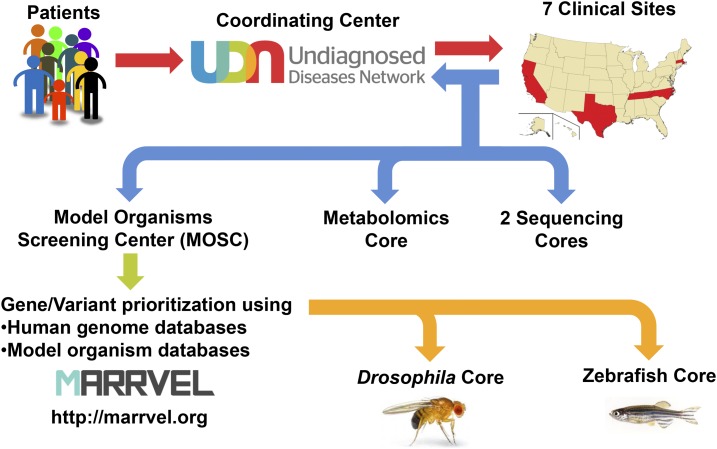Figure 2
The workflow of the UDN and MOSC. Patients with undiagnosed conditions apply to the UDN primarily through a website (UDN Gateway) that is hosted by the Coordinating Center. Application forms and past medical records are then screened by a case review committee to identify cases with objective findings. Once a patient is accepted, she/he will receive a clinical workup in one of the Clinical Sites. For most cases, WES or WGS are performed on the patient and immediate relatives by one of the two Sequencing Cores. In addition, untargeted metabolomics may be performed on patient samples by the Metabolomics Core. By combining the phenotype and genotype information, some cases can be solved without further investigation. If a diagnosis is not made, the clinical site submits candidate gene/variant information to the MOSC together with a brief description of the patient’s condition. The MOSC first performs a database search using the MARRVEL tool to aggregate existing information on the human gene/variant and its model organism orthologs. In addition, matchmaking with patients in other disease cohorts are attempted through collaborations to identify other individuals with similar genotype and phenotype. Once a variant is considered to be a high priority candidate, experiments to assess gene and variant function are designed by the MOSC investigators and pursued in the

